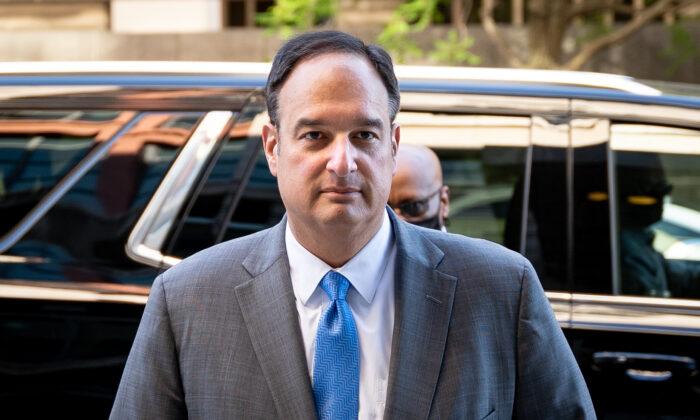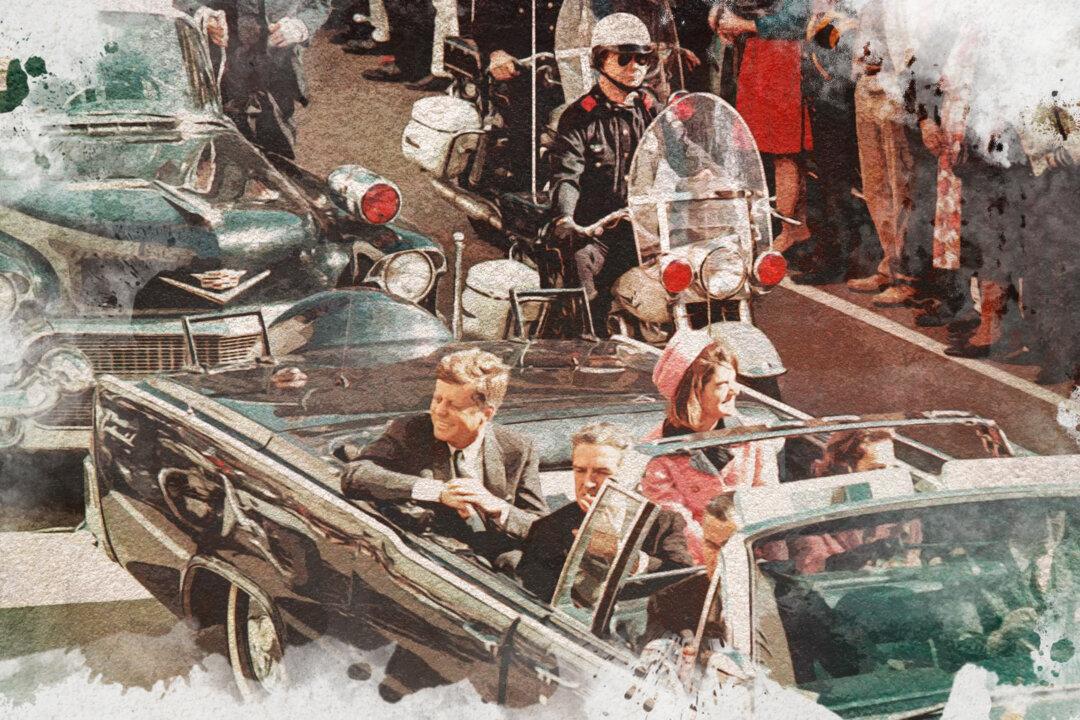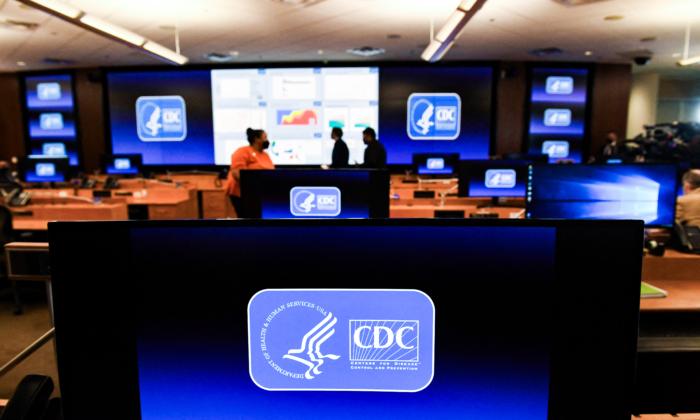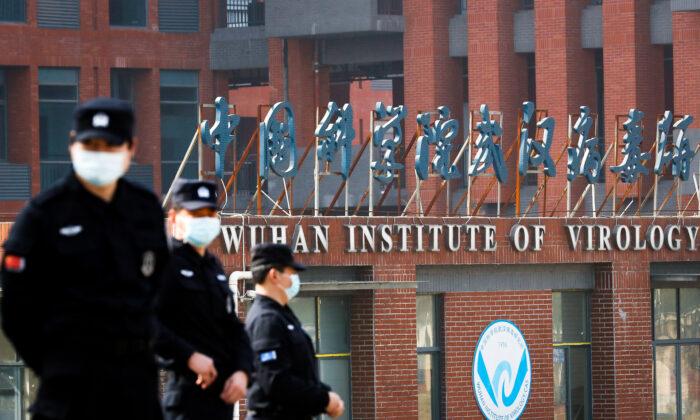News Analysis
The Russiagate saga began in early 2016 as a scheme by Hillary Clinton’s 2016 presidential campaign to vilify her rival, Donald Trump, as an agent of the Kremlin. Clinton’s scheme comprised two prongs: former British spy Christopher Steele’s fictitious dossier and Clinton campaign lawyer Michael Sussmann’s false Alfa Bank data.
While special counsel John Durham’s Russiagate investigation, having focused on those two prongs, is now in serious jeopardy with the acquittal of Sussmann, very little attention has been paid to how the FBI weaponized Clinton’s scheme to turn up the heat on Trump.
Documents made public at Sussmann’s trial add to a growing body of evidence that Clinton’s scheme gradually converged with FBI leadership’s own scheme. What started out as a political smear campaign carried out by a political candidate became co-opted by the nation’s top law enforcement agency to not only damage a sitting president, but to try to remove him from office.
As nefarious as the Clinton campaign’s scheme was, the FBI’s conduct was much worse.
By the time the FBI opened its Crossfire Hurricane investigation into the Trump campaign on July 31, 2016—supposedly because of a tip it had received three days earlier from an Australian diplomat—the Clinton campaign’s scheme to vilify Trump as a Russian agent and the FBI’s own efforts against Trump had started to amalgamate.
Steele—who had been hired by Clinton operatives at Fusion GPS in May 2016—passed an early dossier report to his FBI handler on July 5, 2016. That dossier report established the narrative that the Kremlin had Trump compromised.
Steele’s FBI handler, Michael Gaeta,
passed Steele’s dossier report to an FBI colleague in the New York office, who then passed it up the ladder to the FBI’s counterintelligence team. Later in July 2016, Gaeta received
two additional reports from Steele that he also sent up his chain of command.
Officially, the dossier didn’t reach the FBI Crossfire Hurricane team investigating the Trump campaign until two months later, on Sep. 19, 2016.
Unofficially, Steele’s conspiracy theories had made their way up the FBI chain within weeks of Gaeta getting the first report. According to the inspector general’s
report on the Crossfire Hurricane investigation, high-level FBI officials were already aware of the dossier’s existence, including at FBI headquarters.
Further evidence that an informal FBI investigation was well underway before the Australian diplomat’s tip arrived comes in the form of text messages between the FBI’s then-counterespionage chief Peter Strzok and Lisa Page, counsel for FBI deputy director Andrew McCabe. In one exchange dated July 27, 2016, Strzok and Page talk about
opening a case on Trump.
On July 28, 2016, intelligence services shared
intercepted communications with then-President Barack Obama claiming that Clinton had greenlighted a scheme to vilify Trump with false accusations of Russia collusion. During Sussmann’s trial, Clinton’s campaign manager Robby Mook confirmed that Clinton had greenlighted the leak of the false allegations to the media. But the FBI ignored the intelligence.
A day later, on July 29, 2016, the two prongs of Clinton’s scheme converged when the main protagonists met at the law offices of Perkins Coie in Washington. Attendees included Sussmann, Steele, the heads of Fusion GPS, and lead Clinton campaign lawyer Marc Elias.
It was at that meeting, according to testimony by Steele to a British court, that he
was told about the Alfa scheme. These allegations were then included in a memo by Steele dated Sep. 14, 2016, just days before Sussmann would take the Alfa Bank data to the FBI.
Steele testified in a British court that Sussmann provided him with other claims about Alfa Bank’s purported ties to Russian President Vladimir Putin during a late July 2016 meeting.
While the two prongs of the Clinton campaign’s dirty tricks campaign against Trump had merged, they hadn’t yet been fully integrated into the FBI leadership’s own plans to pursue Trump.
That would happen two months later, on Sep. 19, 2016, the day when Sussmann took the false Alfa Bank data to the FBI. It was the same day the FBI officially received the Steele dossier.
Sussmann’s data was almost immediately dismissed by FBI cyber analysts. The day after Sussmann’s visit, lead cyber agent Scott Hellman
mocked Sussmann’s data in text messages sent to his unit leader, Nate Batty.
In one of the messages, Hellman sarcastically wrote that if he wanted to open a secret communications channel, he would call it “Scott.Hellmann-email.com,” deriding the fact that Sussmann’s Alfa data had used the address “mail1.Trump-email.com,” an address that hadn’t been used since 2009, but suddenly saw a flurry of activity just before Sussmann took his data to the FBI.
Despite the fact that Sussmann’s Alfa Bank story was obviously fabricated, FBI leadership overruled their cyber experts and ordered their Chicago office—far away from their own cyber group—to open a full investigation.
Soon after, in October 2016, the FBI obtained a FISA warrant to spy on the Trump campaign via foreign policy adviser Carter Page. That warrant was obtained on the basis of the fraudulent Steele dossier.
By this time, it was clear that the Clinton campaign and the FBI were pursuing the same goal. All the various schemes had merged into one big scheme to get Trump.
When Trump won the 2016 election despite the smears, the FBI’s actions shifted into overdrive. Trump may well have won because the corporate media—which at that time still by and large adhered to journalistic standards—never fully embraced the Clinton campaign’s dirty tricks.
Most media outlets refused to run with the Steele dossier because they couldn’t confirm any of its stories. The New York Times
refused to endorse the Alfa Bank story for the same reason, even conceding that “there could be an innocuous explanation, like a marketing email or spam, for the computer contacts.”
FBI leadership understood that in order for any scheme to succeed, the media needed a new hook, and deputy director McCabe, who later admitted to
lying about his media contacts, knew how to provide that hook.
When the intelligence community wrote its post-election intelligence community assessment of alleged Russian interference in the 2016 election, McCabe
insisted on including the Steele dossier. Rank-and-file analysts didn’t agree, as nothing in the dossier had been confirmed. A compromise was reached whereby a summary of Steele’s dossier was included in the assessment. The thrust of the summary was that Trump had been compromised by Putin. This was good enough for the FBI. By including it in a formal intelligence community report, the FBI ensured that the dossier obtained legitimacy. FBI Director James Comey then briefed Trump on the dossier on Jan. 6, 2017.
The fact that Trump had been briefed was then leaked to CNN, which
reported the story. From then on, there was only one topic for the media and that was the dossier, including all of its salacious lies.
The FBI had successfully weaponized the Clinton campaign’s dirty trick. Even the false Alfa Bank story made a
comeback in the media. In fact, the FBI knew that both prongs of Clinton’s dirty trick were bogus. The Alfa case had been shut down in January 2017. At the same time, the Steele dossier was exposed as a fraud by Igor Danchenko, Steele’s primary sub-source. Yet FBI leadership persisted in their investigation of Trump.
On March 4, 2017, Trump
wrote on Twitter that he knew he had been spied on. Two days later, a panicked FBI and their Department of Justice (DOJ) supervisors
convened a meeting to discuss Trump’s Twitter post. It was at this meeting that FBI leaders such as McCabe gave their DOJ counterparts a rosy status report on their investigation, concealing the fact that all investigative leads had collapsed. Through their deceit, FBI leadership was able to convince their DOJ superiors to approve a public announcement that the Trump campaign was under investigation for Russia collusion. That bombshell announcement
was made by Comey on March 20, 2017.
The FBI’s efforts culminated in May 2017 with the appointment of Robert Mueller as special counsel.
Ultimately, Trump hung on, but the damage caused by the FBI’s assault on him was immense. His first few years in office were consumed by Mueller and the fake scandal. Crucially, Trump wasn’t able to deliver on his campaign promise to seek better relations with Russia. Every time Trump tried to engage Russia, the media and Washington establishment lashed out.
When Trump met Russian Foreign Minister Sergei Lavrov at the White House in May 2017, he was immediately accused of passing along state secrets. National security adviser H.R. McMaster even had to hold a press conference
to deny the story.
When Trump met Putin in Helsinki in 2018, the press coverage bordered on hysteria, to the point where the media pondered whether a soccer ball that Putin gave Trump as a gift might have been
bugged. At no point during his four-year presidency was Trump given an opportunity to have a meaningful dialogue with Russia. A direct consequence of that is the situation we now see in Ukraine.
The untold story of Russiagate is how the FBI, by weaponizing the Clinton campaign’s dirty tricks, changed the course of a presidency.
And yet, other than a lowly FBI lawyer who got off with a slap on the wrist for doctoring evidence, no one from the FBI has been charged with any crime.
Views expressed in this article are opinions of the author and do not necessarily reflect the views of The Epoch Times.





